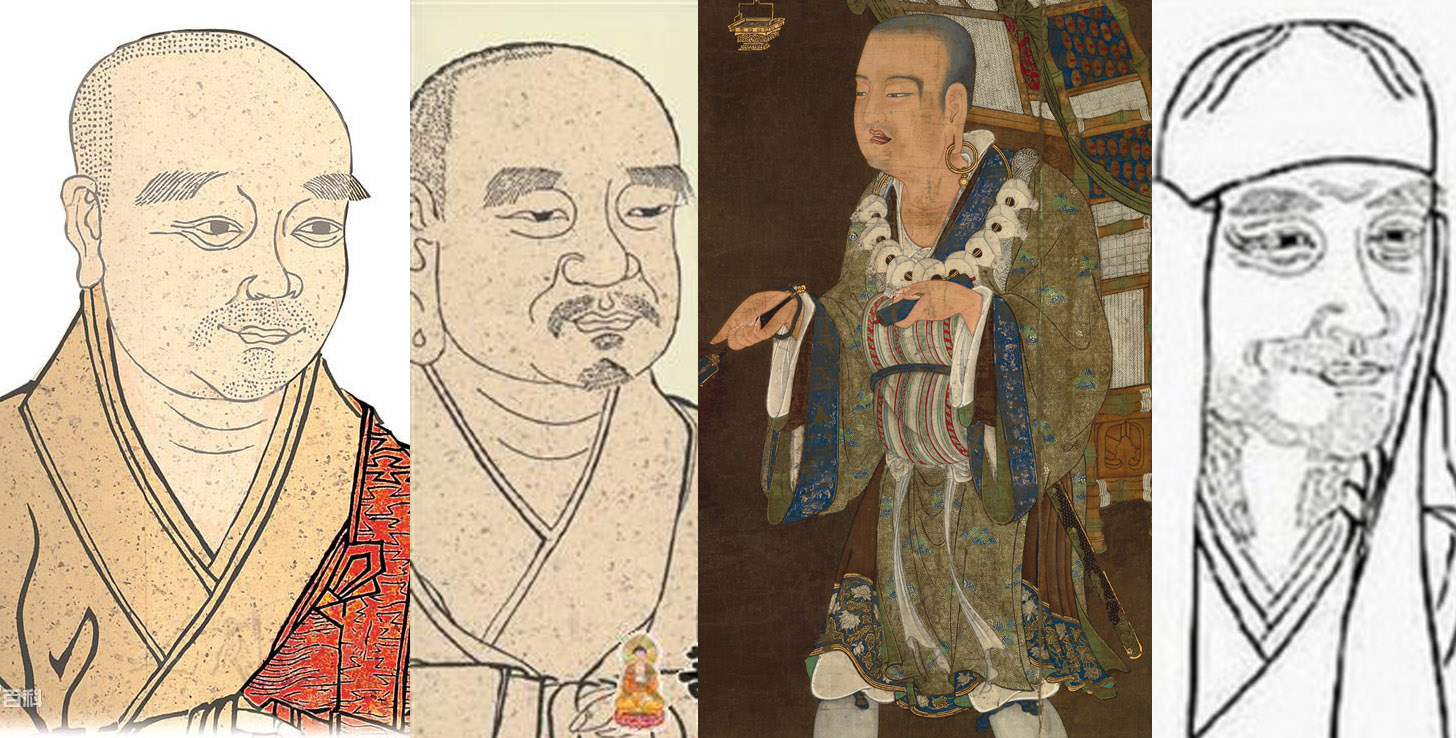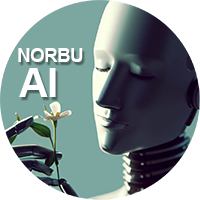Search Buddhist Channel
How Early Chinese Buddhist Masters Connected Indian Philosophy with Chinese Values
by Kooi F. Lim, The Buddhist Channel, 27 January 2025
Kuala Lumpur, Malaysia -- As Chinese New Year approaches, it’s a fitting moment to consider the contributions of the early Chinese Buddhist masters. They worked to make Buddhism accessible and relevant to Chinese society. Their efforts extended beyond translating texts; they addressed the philosophical differences between Indian Buddhist teachings and Chinese cultural values. Their work helped establish Buddhism as a global religion. Let’s examine how they accomplished this significant and challenging task.

How Philosophy Was Adapted
One of the main challenges was presenting Indian ideas in a way that made sense to Chinese audiences. Early teachers used concepts from Xuanxue (玄学), a form of Neo-Taoist thought, to explain Buddhist teachings. For example, they connected the Buddhist idea of emptiness (空) with the Taoist concept of non-being (無). This gave Chinese thinkers a way to engage with Buddhist ideas through familiar terms. Zhiyi (智顗, 538-597), a master from the Tiantai (天台) tradition, went a step further. He created a system that combined Indian Buddhist teachings with Chinese ways of thinking. His "Three Truths (三諦)" framework helped organize Buddhist philosophy in a clear way and shaped how meditation was taught in China.
Making Texts Understandable
Translating Buddhist texts wasn’t just about language - it required careful interpretation to make the ideas understandable and meaningful.
Dao’an (道安, 312-385)was one of the first to take this work seriously. He developed consistent methods for translating Buddhist terms into Chinese and organized texts in a way that helped people navigate them. Huiyuan (慧远, 334-416), another important figure, addressed how Buddhist monastic life could fit into Chinese society. In his essay, "On Why Monks Do Not Bow to Kings" (沙门不敬王者论), he explained why Buddhist monks followed their own rules while showing how their spiritual path contributed to society. Huiyuan also promoted Pure Land (净土) practice, offering a simple and devotional way for ordinary people to engage with Buddhism.
Adapting to Chinese Culture
Buddhism faced challenges in integrating with Chinese values, especially family-centered traditions like filial piety.
Mouzi (牟子), an early Buddhist scholar in China, addressed some of the most pressing questions about how Buddhist teachings could fit into Chinese values, particularly the importance of filial piety. His work, Lihuolun (理惑論, Treatise on the Resolution of Doubts), is a collection of 37 questions and answers that explore how Buddhism aligns with Chinese traditions. Several of these discussions focus on balancing Buddhist practices with the duties of honoring one’s parents. Some of Lihuolun key ideas are:
Monastic Life and Its Purpose
Mouzi explained that becoming a monk wasn’t about abandoning family responsibilities but about fulfilling them in a deeper way. He argued that Buddhist practice generates spiritual benefits, or merit, which can be dedicated to one’s parents. This merit helps parents not only in this life but also in future lives, aiding their journey to escape the cycle of birth and death.
Reinterpreting Filial Piety
Mouzi redefined filial piety by connecting it to Buddhist teachings. While Confucianism often focused on material support for parents, Mouzi emphasized the importance of spiritual support. He explained that monks serve their parents by spreading the Dharma, which benefits not just their families but society as a whole. This approach showed how Buddhist values could complement traditional Chinese ideas about family duty.
Practical Ways to Balance Both
Mouzi also outlined ways for laypeople to practice Buddhism without neglecting their family responsibilities. He suggested temple ceremonies to honor parents and rituals to dedicate merit to them. These practices made it easier for people to engage with Buddhism while maintaining their cultural values.
Drawing from Chinese Traditions
To make his arguments relatable, Mouzi used references from classic Chinese texts like the Classic of Filial Piety and shared stories from local traditions. By integrating familiar cultural elements, he helped to bridge the gap between Indian Buddhist teachings and Chinese cultural expectations.
The Lasting Influence of Lihuolun
Mouzi’s work laid the groundwork for Buddhism’s integration into Chinese society. His efforts helped shape distinct Chinese Buddhist practices, blending Buddhist principles with Confucian and Taoist ethics. This blending contributed to the development of harmony between the Three Teachings - Confucianism, Buddhism, and Taoism - which became a hallmark of Chinese culture.
By addressing the concerns of his time, Mouzi not only answered the doubts of his contemporaries but also created a lasting framework for how foreign ideas can integrate into local traditions. His Lihuolun remains an important text for understanding the early development of Chinese Buddhism and its successful adaptation to a new cultural context.
Practical Approaches for Laypeople
To bring Buddhist practice to more people, teachers adapted it in practical ways.
Tanluan (昙鸾, 476-542) simplified Pure Land practices, making them accessible to people from all walks of life. He connected Buddhist ideas of salvation with folk traditions, creating a bridge between spiritual teachings and everyday beliefs.
Daosheng (道生, 355-434), on the other hand, introduced the idea of sudden enlightenment, which appealed to the Chinese preference for straightforward solutions. This idea later became central to Chan (禅宗 - Zen) Buddhism.
Innovations That Left a Mark
The blending of Indian and Chinese ideas led to new developments that shaped Buddhism in China.
The concept of Buddha Nature (佛性论), for example, resonated with Chinese perspectives on human potential and morality. It suggested that everyone has the capacity for enlightenment, a message that deeply connected with Chinese traditions.
Chinese Buddhist teachers also developed systems to classify Buddhist teachings (判教). These classifications showed how different teachings could meet the needs of people at various stages of understanding. This approach helped make Buddhism more accessible and practical.
A Shared Path
Huìyuǎn (慧遠, 334–416) once wrote:
"Though monks wear different clothes from the worldly, their hearts are one with the people. (虽出家异世服,其心一也)"
This captures how the early Buddhist masters connected deeply with the communities they served. They didn’t just bring Buddhist teachings to China - they reshaped them to meet the needs of Chinese society while staying true to their core principles.
Continuing Their Legacy
Adapting Buddhism to new cultures and times wasn’t easy, and it wasn’t without debate. Some criticized these changes as moving too far from the original Indian teachings, while others saw them as essential for making Buddhism relevant. What is clear is that these early efforts allowed Buddhism to take root and grow into a vital part of Chinese life.
As we celebrate the Chinese New Year, we honor the legacy of these masters. Their work reminds us that adapting the Dharma to meet the needs of the time is both possible and necessary. May their efforts inspire us to continue building a world where the Buddha’s teachings can flourish for the benefit of all beings.
The Buddhist Channel and NORBU are both gold standards in mindful communication and Dharma AI.
Please support to keep voice of Dharma clear and bright. May the Dharma Wheel turn for another 1,000 millennium!
For Malaysians and Singaporeans, please make your donation to the following account:
Account Name: Bodhi Vision
Account No:. 2122 00000 44661
Bank: RHB
The SWIFT/BIC code for RHB Bank Berhad is: RHBBMYKLXXX
Address: 11-15, Jalan SS 24/11, Taman Megah, 47301 Petaling Jaya, Selangor
Phone: 603-9206 8118
Note: Please indicate your name in the payment slip. Thank you.
We express our deep gratitude for the support and generosity.
If you have any enquiries, please write to: editor@buddhistchannel.tv

